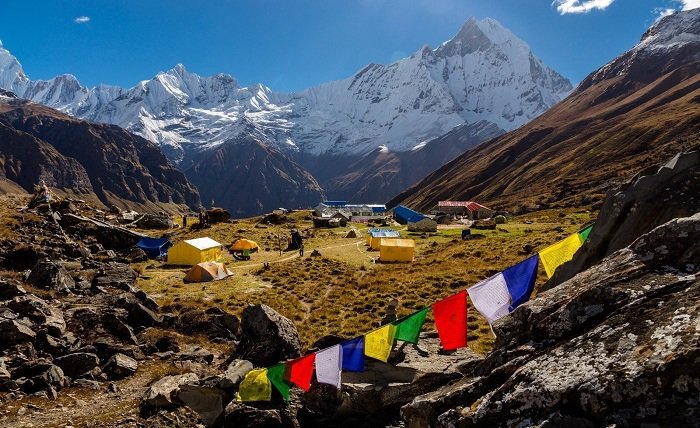How to Stay Cool During Sunny Ascents in the Lower Annapurna Region

The Annapurna Circuit is a legendary trek through climatic extremes and diverse landscapes. Most trekkers will be looking forward to facing the intense, bloodless, and high Annapurna Circuit Altitude of the bypass; but, in the decrease Annapurna Circuit Nepal on the primary days of trek, everybody has to brace themselves for a very distinctive mission: intense heat and humidity. The terrain is often steep, especially in the lower Marsyangdi River Valley, and the climb can be hard going because of the solar. Tackling this heat-pushed phase of the Annapurnas entails a flow far from insulating to active cooling measures, rehydration, and good solar safety. Mastering coping with the heat is critical because you’ll need that extra electricity on the Annapurna Circuit trekking day!
Gear & Apparel Optimization: The Best In Cooling Systems
Downright here on the decrease Annapurna Circuit, you’ll need your equipment decisions to lean into breathability and moisture-absorption as opposed to bulk and heat. Get wearing mild clothing and avoid heavy cotton with the goal of minimizing sweating, which brings greater fatigue and dehydration.
Pick light, mild-coloured apparel in synthetic (consisting of polyester) or merino wool materials. Those fabrics are high-quality, shifting moisture from the pores and skin so it may evaporate and cool you. Perhaps most importantly, however, are long sleeves and broad-brimmed hats— armament that’s all about stopping the sun, not staying warm. Counter-intuitive as it may seem in the alpine, the more you have protecting your skin from exposed bone-to-sun contact (another big source of energy suck is UV exposure), the less radiant heat comes from the sun and the wind, so it feels like. Shoes are likewise key; leave the clunky boots for the chillier, higher components of the Annapurna Circuit Trek and go along with mild path runners or technique footwear if the terrain allows.
Fluid and Solute consumption: persistent Water and Electrolyte consumption
The number one danger in the decrease, warmer regions of the Annapurna Circuit is dehydration, which a purpose to exacerbate your tiredness and can also result in heat exhaustion. Rigorous and continuous hydration is an absolute need for those attempting the Annapurna Circuit round Trek.
You need to take more water than you believe is necessary and drink it regularly. It’s more than just plain water – when you sweat, you lose critical salt and other electrolytes. In addition to just water, you will need some form of Oral Rehydration Salts (ORS) or electrolyte tablets, as these are important for proper muscle function and fluid retention levels. Your Annapurna Circuit Trek Agency may well answer this question for you with: make sure to take a proper means of water purification so that you can frequently refill your bottles from taps or clean streams that are found in wayside stops along the Annapurna Circuit Map or Annapurna Circuit Trek map sections at lower levels. If you wait until you’re thirsty, it’s probably too past due; steady, small sips are the way to stay cool over the years.
Protective pores and skin from the sun: guard against Radiant heat
The sun in the Himalayas is very strong and hot, even at quite low elevation, so it’s not just UV that’s bombarding you but radiant heat too, enough to make your body temp get out of control. It’s your skin that you must defend in a good way to stay cool.
Apply a huge-spectrum, high-SPF sunscreen (SPF 30 or above) to all exposed skin and reapply liberally every few hours, particularly if you’re sweating heavily. The brim of the hat you choose ought to be wide enough to defend your face, ears, and neck. Two great sunglasses, each of which is rated UV for your protection and reduced eye strain. Even a mild sunburn can make it incredibly difficult for your body to keep its temperature in check, meaning that the trip will be far harder going than you ever anticipated on paper! This vital preparation will help to lower your Annapurna Circuit Trek Cost as a whole by avoiding expensive medical problems down the line.
Foot Care and Managing Swelling
Long distances, steep ascents, and heat can cause swelling of the feet, blistering, and general discomfort, which can put paid to your entire Annapurna Circuit Tour. Proper foot care is one of your pleasant preventions for troubles related to warmth in the course of this section of the hike.
Make sure you’re sporting a smooth pair of hiking socks, ones that are moisture-wicking and provide ample cushioning. You get the feeling your feet are swelling, come to a screeching halt, yank off your boots, and dangle your feet for a couple of minutes so that blood can receive cut-off draining. If a teahouse or stream was available, you could soak your feet in some cold water, which feels amazing and is really the only thing they’ve got going for them. Your booties should be highly broken in and breathable. Recognizing and dealing with foot pain early will help you keep moving at a slow and consistent pace towards the chill, oxygen-deprived heights of the circuit Annapurna Trek Itinerary and eventual pass crossing.
Rhythm and Posture: Saving Energy the Right Way
It’s the warmth: in warm weather, runners need to make a planned effort to sluggish down. Dashing will put you in adrenaline mode, which feels first-rate; however, it also eats through your energy reserves too quickly and can leave you gassed later when facing the difficult Annapurna Circuit Altitude.
Commit to the “Nepali flat”: flat is actually slightly uphill, so take it slow and steady, regardless of your energy level. Breathe evenly and rhythmically, taking short breaks often in the shade. The Annapurna Circuit in its entirety is a marathon, and it’s no race. In case you are trekking with a guide from an Annapurna Circuit Trek company, specify your approximate warmth and relaxation needs. Efficient management of your effort in the heat is a key factor in the overall strategy of logistics for completing the whole Trek Nepal Annapurna Circuit route successfully. This makes up a large part of the views on display at the beginning of the map for the Annapurna Circuit.
Final Thoughts on Lower Annapurna Heat Performance Summary
The initial days of the Annapurna Circuit trek will see how well you deal with stifling tropical heat and humidity before it becomes cold at the high passes. Setting smart timing, light and breathy technical wear, aggressive hydration (with Electrolytes), and a nice steady pace can once again counteract the emptying effects of that sun. Getting down should be done well because it will make sure you are resourced for what lies ahead. Perfect navigation of the lower portion is paramount to achieving Annapurna Circuit happiness in full and setting up your reserves for high challenges when you must face them with an Annapurna Circuit Altitude. This tempered approach to heat at the outset of your Annapurna adventure is an excellent method to guard against long-term success on the Annapurna Circuit.





